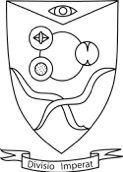The Lab of Paul Maddox

Every living thing is made up of cells. For a fertilized egg to become a person, or for tissues like the skin and digestive tract to be replenished to compensate for wear and tear, cells must multiply. Proper cell multiplication is also necessary to avoid disease states including cancer. Therefore, to understand normal development and certain pathologies, we must understand how cells multiply.
A cell first grows and makes a copy of its DNA blueprint. Then, the DNA is rearranged from a massive tangle into individual rods, called chromosomes, which can be moved in a controlled fashion. The cell builds a machine, the spindle, which attaches and moves the chromosomes so that one complete copy of the blueprint is placed at each end of the cell. Finally, the single “mother cell” must be physically split into two “daughter cells.”
Although these dramatic events of cell division have fascinated researchers for over a century, major questions remain about the cellular machines that carry out these steps, and how our collective current knowledge applies to different kinds of cells. Our lab is working to understand how many of these steps in cell division take place. We use multiple model animal cells, to be sure what we discover is true for most cells. We make movies of cells dividing and then measure parameters including the size, speed, packing, and shape of cellular features.
Please see our “Projects” pages to learn more about ongoing on in the lab. The glossary below will prepare you for these synopses.
On the beautiful campus of the University of North Carolina at Chapel Hill, the lab of Paul Maddox uses high-resolution microscopy, quantitative image analysis, cell biology, genetics, biochemistry, and developmental biology to study cell division.


Glossary
Chromatin condensation: the organization of DNA into physically distinct, usually rod-shaped bodies. When not “condensed,” DNA strands snake through the nucleus in an apparent tangle, with various degrees of compaction.
Chromosome: a large linear piece of DNA. The term often refers to the DNA in its condensed form, which is named for its prominent staining with dyes; “colored body”
Chromosome segregation: the physical movement of chromosomes into two regions of a dividing cell such that each nascent daughter cell inherits an equal, complete copy of the genome.
Confocal microscopy: a class of light microscopy methods in which excitation light is focused on a thin optical section and emission light is collected specifically from this optical section. These methods maximize resolution and signal-to-noise ratio while minimizing photobleaching and phototoxicity.
Kinetochore: named “moving body,” this cellular machine is a large collection of tens of different cellular chemicals, or proteins, that collectively ensure proper attachment of chromosomes to the spindle and segregation into the forming daughter cells.
Microtubule: a component of the cell’s dynamic inner skeleton, made in the shape of a long, slender thin-walled tube from oblong building blocks. Microtubules can grow and shrink, and provide tracks and forces in the cell.
Spindle: named for its resemblance to a rod wrapped thick with string, the often barrel-shaped spindle is composed largely of microtubules. Molecular motors that walk along microtubules and microtubule-bundling proteins organize the spindle to achieve its regulated shape, size and dynamicity. The bipolar nature of the spindle ensures that bipolar attachments are made to chromosomes at the kinetochores, and that the two copies of DNA are segregated properly.
Super-resolution imaging: the theoretical resolution limit of light microscopes is dictated by the wavelength of the light we use to excite and image cells. Many cellular features we study are smaller than this limit. We use both super-resolution image acquisition and super-resolution image analysis to measure the size, spacing and placement of cellular features with super-resolution accuracy.
